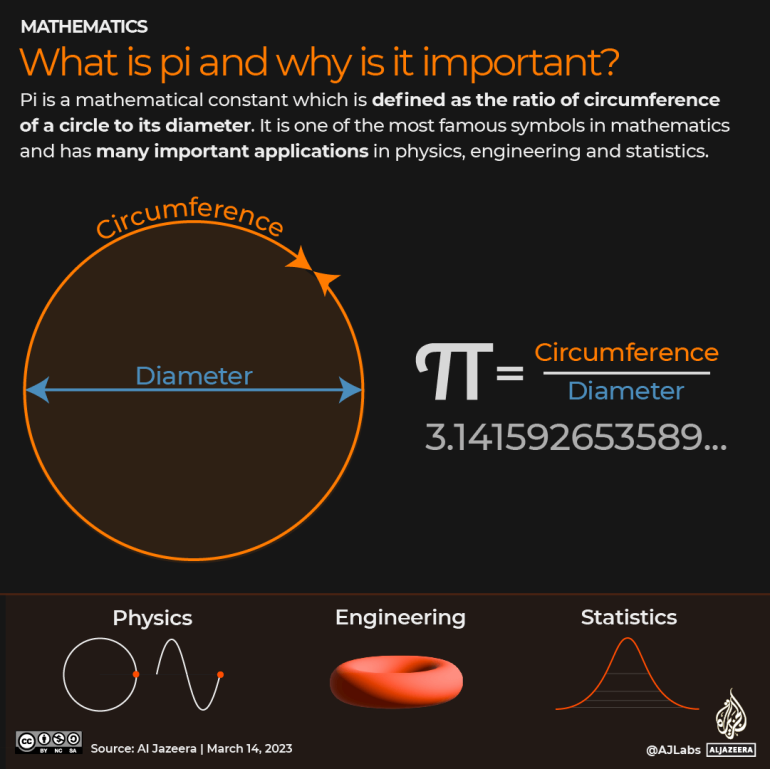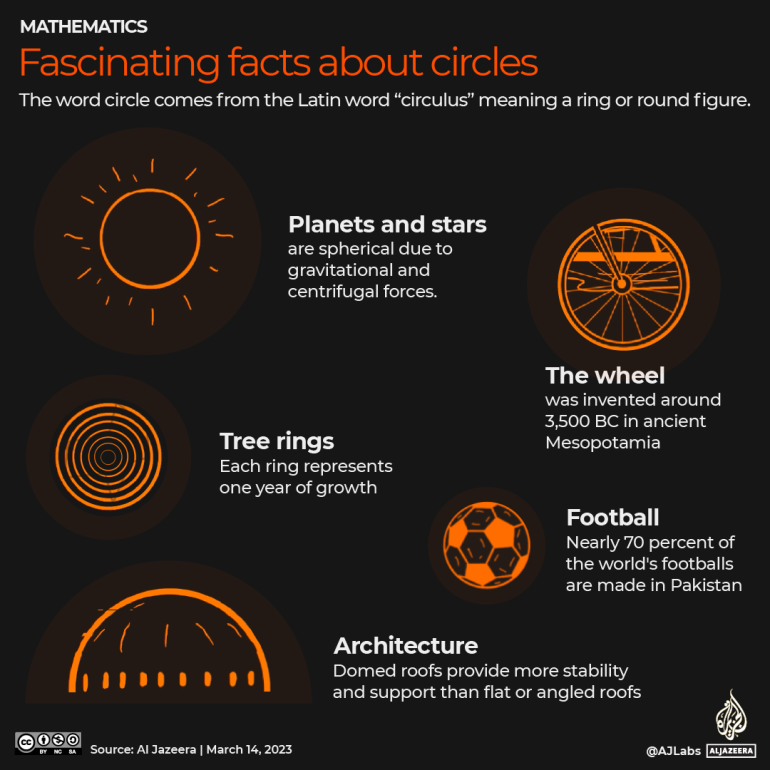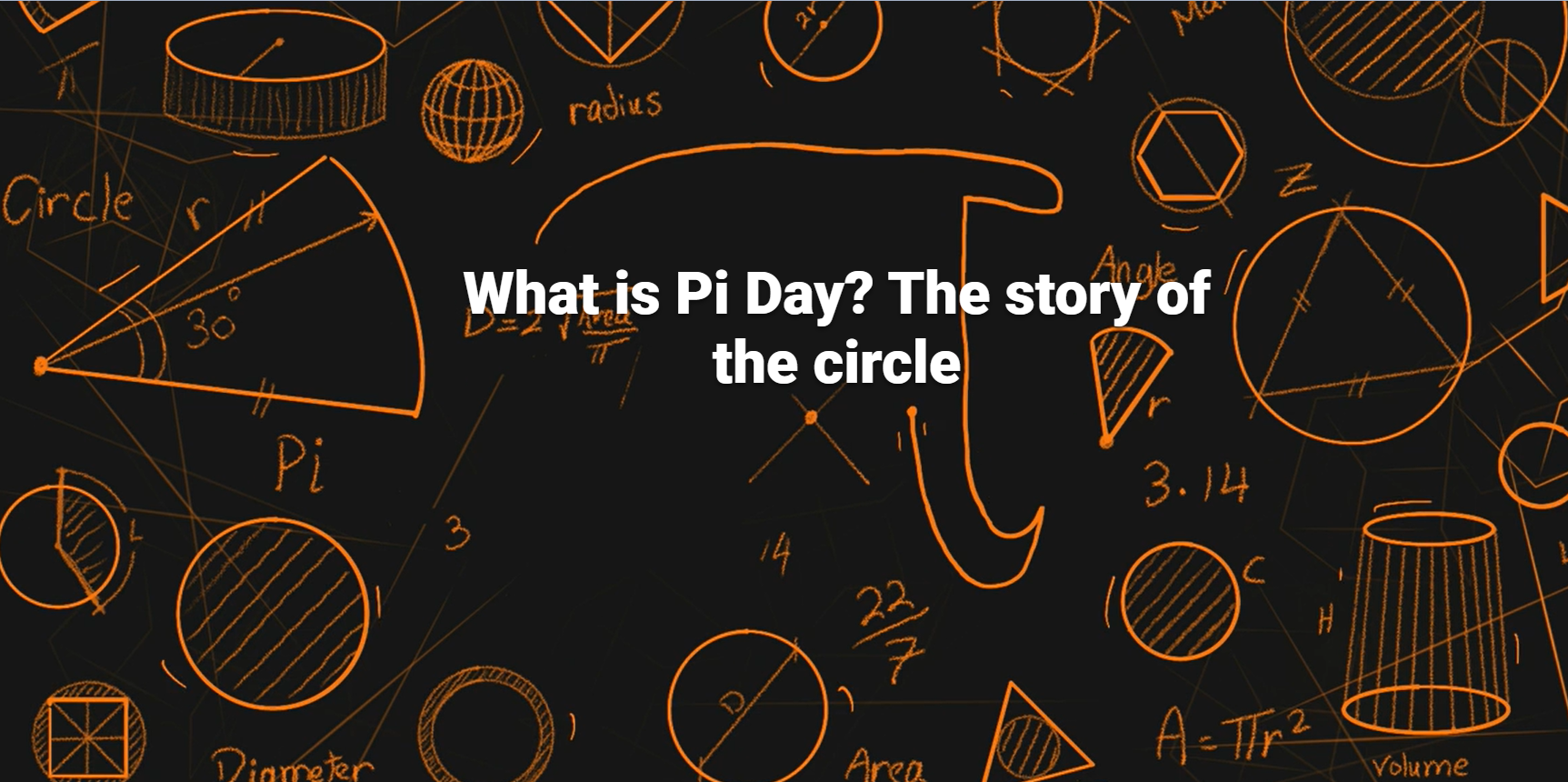Circles are some of the most beautiful and versatile shapes in nature.
Every March 14, mathematics enthusiasts from all over the globe commemorate Pi Day and the International Day of Mathematics (IDM).
The day aims to raise awareness about the importance of mathematics and its role in shaping our world, as well as to promote the beauty and relevance of mathematics to a wider audience.
This year’s theme is Mathematics for Everyone. Around the world, more than 1,700 events have been announced to celebrate the day.
What is pi and why is it important?
Pi is the ratio of the circumference of a circle to its diameter, which is approximately 3.14.
Pi is one of the most famous symbols in mathematics and has many important applications in physics, engineering and statistics.
While the idea of pi dates back thousands of years, it was only in the early 1700s when the Greek letter for p, or π, was used to represent the mathematical constant.
It is believed that π was chosen as an abbreviation of periphery or perimeter which measures the distance around the outside of the circle, also known as a circle’s circumference.

Why is Pi Day celebrated on March 14?
March 14 can also be written as 3/14 in the month/day format, which matches the first three digits of the numerical value of pi.
The celebration of Pi Day began on March 14, 1988, at the San Francisco Exploratorium, where physicist Larry Shaw organised a celebration to make mathematics more relatable and fun.
March 14, 1879, also happens to be the birthday of Albert Einstein, one of the most influential scientists of the 20th century.

How is pi calculated?
Pi is a special type of number in mathematics – it is irrational and never-ending.
An irrational number cannot be expressed as a fraction or ratio of two integers. Despite this, there are some close approximations of pi, including 22/7 (3.1428571) and 355/113 (3.1415929).
For thousands of years, mathematicians have been on a mission to more accurately calculate the value of pi. Greek mathematician Archimedes was one of the first to calculate an accurate approximation of pi by adding more and more sides to a polygon drawn within a circle.
Using this technique, Archimedes showed that π is between 3 1/7 and 3 10/71.
The infinite digits of pi
Adding sides to polygons was eventually replaced with more exact formulas, including the use of infinite series. Nowadays, using powerful computers, mathematicians have been able to calculate the digits of pi to trillions of decimal points.
In 2022, Emma Haruka Iwao, a Japanese computer scientist, used a supercomputer running for 157 days to calculate up to the 100-trillionth digit of pi.
While calculating the digits to unfathomable amounts might not have immediate benefits, the computational techniques used in such calculations can be adapted to work in resource-intensive tasks such as mapping the human genome or modelling the universe.
The animation below shows how the first 100 digits of pi are distributed.
Fascinating facts about circles
The word circle comes from the Latin word “circulus”, meaning a ring or round figure.
Circles are elegant shapes, they have no corners or edges and appear widely across nature as well as in many human expressions of art and engineering.
Below are five interesting facts about circles:

The wheel
One of the most significant inventions in human history, the wheel is thought to have been invented around 3,500 BC in ancient Mesopotamia where they were first used for pottery and then for transport.
Tree rings
Circles can be seen all around us in nature, from the iris of an eye to the inner rings of a tree. The rings inside of a tree trunk are called growth rings, with each ring representing one year of growth.
Footballs
A sphere is a three-dimensional representation of a circle. In various sports, including the world’s most popular sport – football, a perfectly round ball is required for consistency, predictability and speed. Nearly 70 percent of the world’s footballs are made in Pakistan.
Architecture
In design, circles are also often used to represent wholeness, balance and harmony. A circular dome, such as those seen on the roofs of most mosques, is not only visually appealing but also provides more stability and support than a flat or angled roof.
Planets
Stars and planets, including Earth, are spherical due to gravitational and centrifugal forces. In fact, Earth has a diameter of about 12,742km (7,926 miles) around the equator and 12,714km (7,900 miles) at the poles, a difference of only 42km (27 miles). Such a shape with slightly flattened poles is technically known as an oblate spheroid.














